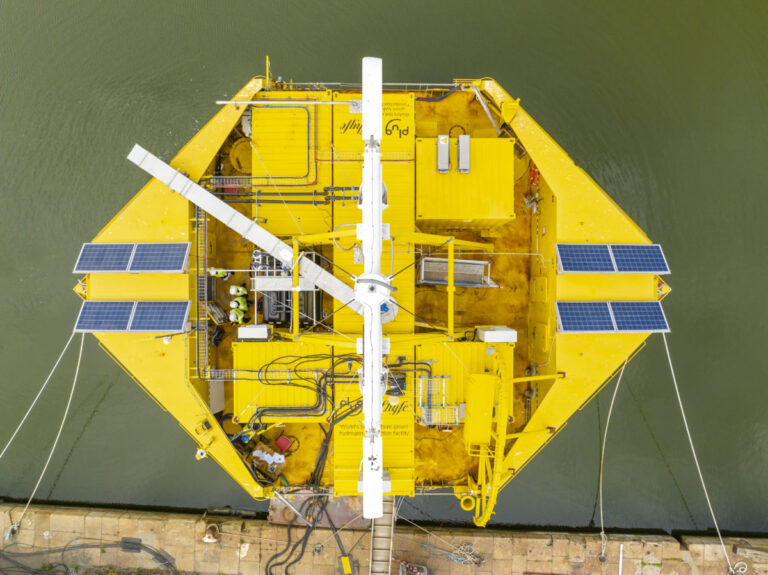The German government says the H2Mare OffgridWind project in Denmark has connected two electrolysers to a wind turbine for hydrogen production, while Ontras Gastransport and H2 Energy Europe have agreed to define the technical and commercial framework for hydrogen transport in their Green Octopus Mitteldeutschland pipeline project.
The German government said the H2Mare OffgridWind project in Denmark has successfully linked two electrolyzers for hydrogen production to an onshore wind turbine. The project will be a model for a similar system on the high seas. “In the coming months, H2Mare will now investigate how fluctuating electricity production affects the operation of the system,” the German government said. It added that all necessary equipment could soon be housed on a platform directly on an offshore wind turbine. According to the German government, this is the first time that two electrolyzers have been directly linked to a megawatt-scale turbine, which could help reduce production costs.
Ontras GastransportT and H2 Energy Europe have agreed to define the technical and commercial framework for hydrogen transport in Ontras’ Green Octopus Mitteldeutschland (GO!) pipeline project. Ontras will transport renewable hydrogen to German industrial regions including Salzgitter, Berlin, Eisenhüttenstadt, Magdeburg and Leipzig-Halle, with an initial focus on the chemical and steel industries. “By combining our planned 1 GW green hydrogen production project in Denmark with Ontras’ robust gas transport network in Germany, we want to contribute to the development of an integrated, reliable hydrogen economy across Europe.” said Cyril Cabanes, CEO of H2 Energy Europe.
GreenGo energy said it has signed two partnerships to develop hydrogen projects in Namibia. The company will sign an agreement with InnoSun Energy Holdings to jointly develop large-scale solar and wind projects for green hydrogen production, leveraging InnoSun’s established presence in wind development in Namibia. GreenGo Energy will also work with Lodestone, a local iron mining company, to integrate green hydrogen into steel production, with the aim of setting new standards for sustainable production.
MOL has started hydrogen production at its 10 MW electrolysis unit in Százhalombatta, Hungary. The €22 million ($24.4 million) facility.which one produces 1,600 tons of hydrogen per year, will serve the Danube refinery. Plug Current supplied the electrolysis unit. “The new technology will gradually replace the natural gas-based production process, which we are currently considering a sixth of MOL Group’s total CO2 emissions,” said the Hungarian company, adding that the unit is the largest capacity green hydrogen plant in the region.
Lhyfe And H2 Mobility Germany have signed a five-year agreement for the supply of renewable hydrogen. “The hydrogen is delivered of the future Lhyfe production site in Schwäbisch Gmünd, the largest green hydrogen production plant in the state of Baden-Württemberg,” said Lhyfe. The first hydrogen deliveries will be used developed and operated in four filling stations by H2 Mobility Deutschland in the states of Baden-Württemberg and Rhineland-Palatinate.
DH2 energy said that the Portuguese Investment and Foreign Trade Agency (AICEP) has awarded its VVR Green Renewable Hydrogen Production Project the status of Potential National Interest (PIN). The company announced that the plant will start with an electrolysis capacity of 35 MW and 49 MWp of solar energy, using a dedicated PV plant to supply electricity to the electrolyzer and connect to the grid. In the first phase, the project aims to produce 1,650 tons of renewable hydrogen annually. DH2 energy said it plans to expand the plant to 75 MW of electrolysis and 100 MW of solar power in the second phase.
This content is copyrighted and may not be reused. If you would like to collaborate with us and reuse some of our content, please contact: editors@pv-magazine.com.


